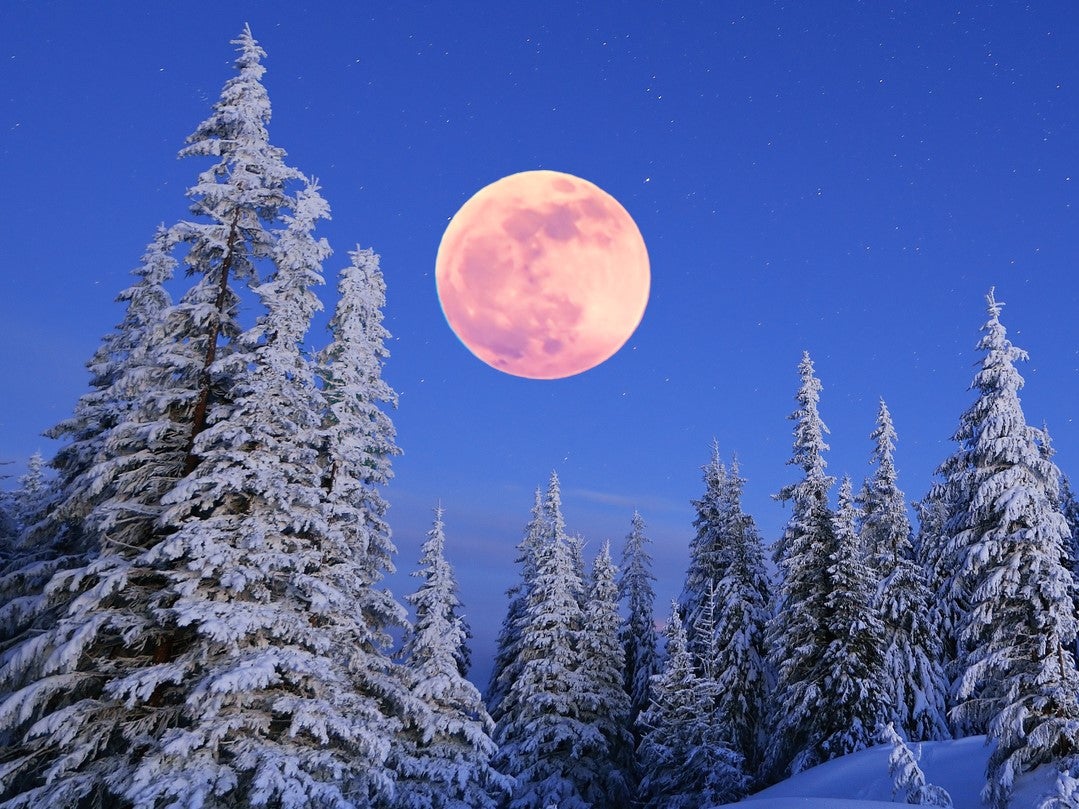Full Moon 2022: February Snow Moon peaks tonight at sunset, offering best view of optical illusion
Moon Illusion makes the Earth’s satellite appear bigger as it rises above the horizon

This week’s full Moon will peak just before sunset on Wednesday in the UK, offering a unique opportunity to witness an optical trick known as the Moon Illusion.
The aptly named Snow Moon may even coincide with snowfall in some areas of the country, due to the arrival of Storm Dudley and Storm Eunice this week.
Sunset in the UK on 16 February is just after 5pm, while the full Moon peaks at 4.57pm GMT (11.57am US Eastern Time) – although it will appear full in the sky on both days either side of that date.
The Moon appears at its biggest and brightest when it is closest to the horizon, due to the Moon Illusion.
The exact science behind this is still not entirely known, though astronomers have several theories for what causes this optical illusion.
“Photographs prove that the Moon is the same width near the horizon as when it’s high in the sky, but that’s not what we perceive with our eyes. Thus it’s an illusion rooted in the way our brains process visual information,” Nasa notes on its website.
“Despite the fact that people have been observing this illusion for thousands of years, we still don’t have a rock-solid scientific explanation for it. In general, the proposed explanations have to do with a couple of key elements of how we visually perceive the world: how our brains perceive the size of objects that are nearer or farther away, and how far away we expect objects to be when they’re close to the horizon.”
The full Moon rises when the Sun sets, meaning this week’s full Moon will be hitting its peak just as it appears above the horizon.
“It seems that our brains don’t know that the Moon’s distance doesn’t change that much no matter where it is in the sky on a given night,” Nasa continues.
“There’s also some thinking that objects in the foreground of your lunar view play a role. Perhaps trees, mountains, and buildings help to trick your brain into thinking the Moon is both closer and bigger than it is.”
The US space agency adds that neither explanation is perfect, as Nasa astronauts in orbit aboard the International Space Station (ISS) also see the Moon illusion, even without any foreground objects to act as distance clues.
Subscribe to Independent Premium to bookmark this article
Want to bookmark your favourite articles and stories to read or reference later? Start your Independent Premium subscription today.

Join our commenting forum
Join thought-provoking conversations, follow other Independent readers and see their replies